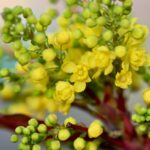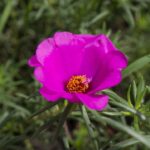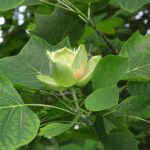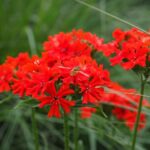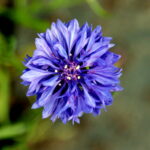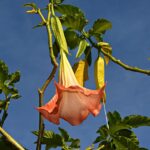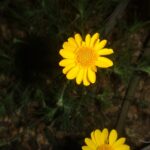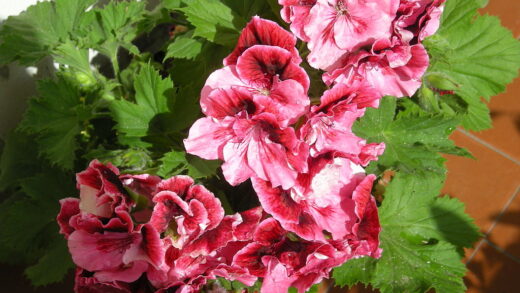Diseases and pests of the sweet chestnut
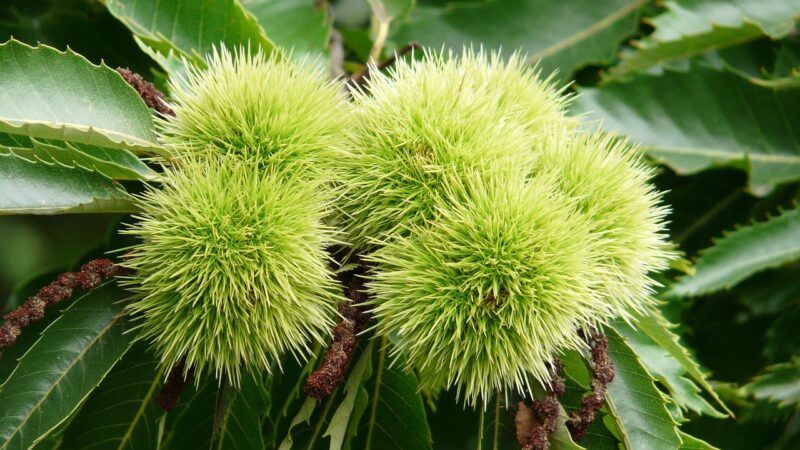
Cultivating sweet chestnut trees can be an immensely rewarding endeavor, but like all plants, they are susceptible to a range of diseases and pests that can threaten their health and productivity. A proactive approach to plant health management, grounded in prevention and early detection, is the cornerstone of successfully protecting these magnificent trees. Understanding the most common threats, recognizing their early symptoms, and knowing the appropriate control measures are essential skills for any grower. By being vigilant and informed, you can significantly reduce the impact of these potential problems and ensure the long-term vitality of your trees.
Fungal diseases pose the most significant threat to sweet chestnuts, with notorious pathogens like chestnut blight and ink disease capable of causing widespread damage and tree mortality. These diseases have historically had a devastating impact on chestnut populations, making disease management a top priority. Prevention is always the best strategy, which involves choosing disease-resistant cultivars when available, planting in appropriate sites with good air circulation and soil drainage, and practicing good sanitation to reduce the presence of fungal spores. Should an infection occur, swift and decisive action is required to manage its spread and mitigate the damage.
A variety of insect pests can also affect sweet chestnut trees, ranging from those that damage the leaves and shoots to those that directly attack the valuable nuts. Pests such as the chestnut gall wasp can disrupt normal growth, while the chestnut weevil can render an entire nut harvest inedible. An integrated pest management (IPM) approach is the most sustainable way to handle these challenges. This strategy combines cultural practices, biological controls, and, only when absolutely necessary, the targeted use of chemical treatments to keep pest populations below a level where they cause significant economic or aesthetic damage.
Ultimately, the best defense against both diseases and pests is a healthy, vigorous tree. A tree that is well-sited, properly watered and fertilized, and not under stress is inherently more resilient and better able to fend off attacks. Regular monitoring is key; taking the time to walk through your orchard or inspect your garden tree allows you to catch problems at their earliest stages when they are much easier to control. This combination of promoting tree health, maintaining vigilance, and having a clear action plan is the most effective way to protect your sweet chestnut trees and ensure they remain a productive and beautiful presence in your landscape.
Chestnut blight
Chestnut blight, caused by the fungus Cryphonectria parasitica, is arguably the most destructive disease of chestnut trees worldwide. The fungus enters the tree through wounds in the bark, whether they are from pruning cuts, storm damage, insect boring, or natural cracks. Once inside, it grows in the cambium layer, killing the surrounding tissue and forming a canker, which is a sunken, discolored area of dead bark. These cankers effectively girdle the branch or trunk, cutting off the flow of water and nutrients from the roots to the parts of the tree above the infection, causing them to wilt and die.
More articles on this topic
The most obvious symptoms of chestnut blight are the sudden wilting and browning of leaves on a branch during the growing season, while the rest of the tree appears healthy; this is known as “flagging.” Upon closer inspection of the branch below the wilted leaves, you will likely find a swollen or sunken canker. The bark on the canker may be a yellowish-brown or orange color, and you might see small, orange or reddish fruiting bodies of the fungus emerging from cracks in the bark. Over time, the canker will expand and eventually encircle the stem, leading to the death of everything beyond that point.
Prevention and management are critical in dealing with chestnut blight. One of the most important preventative measures is to avoid wounding the tree unnecessarily. When pruning is required, it should be done during the dormant season, and all tools must be sterilized with a bleach solution or alcohol between cuts, especially if you are working on multiple trees. If a canker is detected early on a smaller branch, it can sometimes be managed by pruning the branch off at least 25-30 centimeters below the visible edge of the canker and destroying the infected wood by burning it.
For growers planting new trees, the most effective long-term strategy is to select blight-resistant cultivars. While the European sweet chestnut (Castanea sativa) has some susceptibility, significant breeding efforts have produced hybrid varieties that incorporate the high level of resistance found in Chinese chestnut (Castanea mollissima) trees. Planting these resistant hybrids is the best insurance against future losses from this devastating disease. In some regions, biological control methods using less virulent strains of the fungus are also being explored, but cultivar selection remains the primary defense for new plantings.
Ink disease
Ink disease is another serious and often fatal condition that affects sweet chestnut trees, caused by soil-borne water moulds of the Phytophthora genus, primarily P. cinnamomi and P. cambivora. These pathogens thrive in wet, poorly drained soils and attack the tree’s root system and the base of the trunk. The infection leads to the death of the fine feeder roots, impairing the tree’s ability to absorb water and nutrients, which in turn causes a gradual decline in the overall health of the tree’s canopy. The disease gets its name from the characteristic symptom of a black, ink-like fluid that seeps from cracks in the bark at the base of the trunk.
More articles on this topic
The above-ground symptoms of ink disease can often be mistaken for drought stress or other problems, which can delay correct diagnosis. An infected tree will typically show signs of decline, such as small, sparse, and yellowing leaves, dieback in the upper branches, and a failure to produce a good crop of nuts, which are often small and of poor quality. As the root system is progressively destroyed, the tree’s overall vigor diminishes, and it becomes susceptible to other secondary pests and diseases. The presence of the dark, inky ooze near the soil line is the most definitive diagnostic feature.
Prevention is the only effective management strategy for ink disease, as there is no chemical cure once a tree is significantly infected. The most critical preventative step is proper site selection. Sweet chestnut trees must be planted in deep, well-drained soils and never in locations that are prone to waterlogging or have heavy, compacted clay. Improving soil drainage before planting by incorporating large amounts of organic matter or planting on a sloped site or a raised berm can significantly reduce the risk of infection. Avoiding overwatering is also crucial, as saturated soil creates the ideal environment for the Phytophthora pathogens to thrive and spread.
If ink disease is confirmed in an area, it is vital to avoid spreading the contaminated soil to other locations on tools, machinery, or footwear. Infected trees should be removed, including as much of the root system as possible, to reduce the amount of pathogen in the soil. It is not advisable to replant another sweet chestnut in the same location. Instead, choose a tree species that is resistant to Phytophthora root rot. Some chestnut rootstocks have shown a degree of tolerance to the disease, so if you are planting in an area with a history of the problem, seeking out trees grafted onto these specific rootstocks is a worthwhile precaution.
Chestnut gall wasp
The Asian chestnut gall wasp (Dryocosmus kuriphilus) is a significant insect pest of chestnut trees that can reduce tree vigor and nut production. The tiny adult wasp, which is only a few millimeters long, lays its eggs inside the buds of the chestnut tree during the summer. The eggs overwinter within the buds, and in the following spring, as the new shoots begin to grow, the larvae hatch and induce the formation of a characteristic gall. These galls are green or pinkish, round swellings, typically 1-2 centimeters in diameter, that form on the new shoots, leaves, or catkins (flowers).
The damage caused by the gall wasp is a direct result of the galls themselves. These abnormal growths disrupt the normal development of the shoots and leaves, leading to stunted and distorted growth. A heavy infestation can significantly reduce the photosynthetic capacity of the tree, weakening it over time. Furthermore, when galls form on the female flowers or catkins, it directly prevents nut formation, leading to a substantial reduction in the harvest. While the galls themselves do not typically kill the tree, a severe, sustained infestation can leave the tree stressed and more vulnerable to other problems like drought and disease.
Managing the chestnut gall wasp primarily relies on biological control, as chemical treatments are often ineffective and can harm beneficial insects. The most successful biological control agent is a parasitic wasp called Torymus sinensis, which was introduced from the pest’s native range in China. This parasitoid lays its eggs inside the gall wasp larvae within the gall. The Torymus larvae then consume the gall wasp larvae, eventually emerging as adult wasps the following spring to continue the cycle. The establishment of this parasitoid has been highly effective in reducing gall wasp populations to manageable levels in many regions.
For the home grower, management focuses on promoting tree health to help it withstand infestations. Pruning and destroying galled shoots before the adult wasps emerge in early summer can help to reduce local populations, but this is often impractical for large trees. The most important long-term strategy is to encourage the presence of natural enemies and to plant chestnut cultivars that have shown some level of resistance or tolerance to the pest. Over time, as biological control agents become more established, the impact of the chestnut gall wasp is expected to lessen.
Chestnut weevils
Chestnut weevils are among the most frustrating pests for those growing sweet chestnuts for their nuts, as they directly damage the harvest, leaving the kernels “wormy” and inedible. There are two common species, the large and lesser chestnut weevil, both of which have a similar life cycle. The adult weevils, which are brownish beetles with a characteristically long, curved snout, emerge from the soil in late summer and fly to the chestnut trees. The female uses her long snout to chew a small hole in the developing nut, through the spiny burr, and then lays her eggs inside.
The damage is caused by the larvae that hatch from these eggs. The small, white, grub-like larvae feed on the starchy kernel of the nut as it develops, growing inside the shell throughout the late summer and early autumn. By the time the nuts are ripe and fall to the ground, the larvae are fully grown. An infested nut may look perfectly normal from the outside, but inside it will be hollowed out and filled with the larva and its frass (excrement). After the nut falls, the larva chews a small, circular exit hole, emerges from the nut, and burrows into the soil to overwinter, pupating and emerging as an adult the following summer to repeat the cycle.
Control of chestnut weevils is challenging and relies heavily on interrupting their life cycle through sanitation. The most critical management practice is to collect all fallen nuts and burrs from the ground promptly and frequently, ideally every one to two days during the harvest period. This removes the larvae from the orchard before they have a chance to burrow into the soil. All collected nuts should be processed immediately. A simple way to check for infestation is to place the nuts in a bucket of water; infested nuts are often lighter and will float to the top.
Destroying all culled nuts and leftover orchard debris is essential to prevent the larvae from completing their development. Do not simply add them to a compost pile unless you are certain it will reach temperatures high enough to kill the larvae. In addition to sanitation, allowing poultry like chickens or guinea fowl to forage under the trees can be an effective biological control method, as they will eat the larvae and adult weevils. For commercial orchards, some chemical controls are available, but for the home grower, diligent sanitation is the most effective and environmentally friendly approach to managing this pest.
Other potential problems
Besides the major diseases and pests, sweet chestnut trees can be affected by a variety of other, less common issues. Powdery mildew is a fungal disease that can appear as a white, dusty coating on the leaves, particularly during periods of high humidity and warm temperatures. While it is generally not a serious threat to the health of a mature tree, a severe infection can reduce photosynthesis and slightly weaken the plant. Ensuring good air circulation by proper pruning and avoiding overhead watering can help to minimize its occurrence. In most cases, chemical treatment is not necessary for established trees.
Leaf spot diseases, caused by various fungi, can also appear on sweet chestnut leaves, creating small, dark, or tan spots that may sometimes merge into larger blotches. These are most common during wet spring weather. Similar to powdery mildew, these diseases are typically cosmetic and do not cause significant harm to a healthy tree. The best management practice is good sanitation: raking up and destroying all fallen leaves in the autumn to reduce the amount of fungal inoculum that can survive the winter and re-infect the tree the following spring.
Root-knot nematodes are microscopic roundworms that can infest the roots of sweet chestnut trees, particularly in sandy soils. They cause the formation of galls or “knots” on the roots, which damages the root structure and impairs its ability to absorb water and nutrients. An affected tree may show symptoms of stunting, yellowing, and general decline. Management is difficult, so prevention is key. Before planting, ensure the site is free from high populations of these nematodes, and promote soil health by incorporating large amounts of organic matter, which can encourage beneficial microorganisms that prey on nematodes.
Finally, abiotic or environmental problems can also cause stress to the tree. Sunscald can occur on the trunks of young trees during the winter when the sun warms the bark during the day, followed by freezing temperatures at night, causing the bark to split. This can be prevented by wrapping the trunk with a commercial tree wrap or painting it with white latex paint diluted with water. Soil compaction from foot or vehicle traffic over the root zone can also damage roots and lead to decline. Maintaining a mulched area under the canopy and avoiding traffic in this critical zone is essential for long-term tree health.

